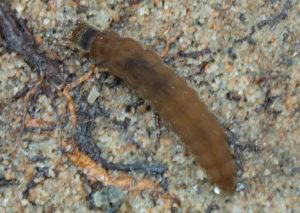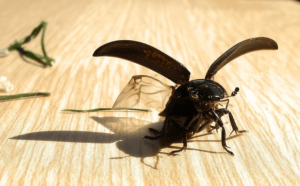Water beetle: poor swimmer, excellent pilot
Rivers and reservoirs have their own flora and fauna. Its diversity depends on the temperature regime of the region and the aquatic environment. One of the unusual inhabitants can be called a water lover - a beetle that lives in the water.
Content
Water beetle: photo
Description of water lovers
Name: water lovers
Latin:HydrophilidaeClass: Insects - Insecta
Squad: Coleoptera - Coleoptera
 | Habitats: | thickets and stones near ponds |
 | Dangerous for: | small fish and shellfish |
 | Means of destruction: | not necessary |
Beetles have a massive head with large eyes and movable whiskers. The structure of all representatives of the species is the same, and the sizes and shades differ depending on the species.
Habitat
Europe, the Southern Urals, Western Siberia are the habitats of the small water-lover. The large water-lover lives in Europe, the Mediterranean, the Caucasus, Central and Central Asia, Southern Siberia, the Black Sea, China, and India. An exception for all species is the Far North.
Both species prefer small, shallow stagnant bodies of water with aquatic vegetation and muddy bottoms. There are types of water lovers that live in rotting plant remains or manure.
Life cycle
The mating of beetles begins after the end of wintering. Females select a leaf from an aquatic plant to weave a cocoon. Males are sometimes involved in this process.
The cocoon has a sac-like flattened shape. The number of cocoons can be no more than 3. It takes up to 5 hours to weave one cocoon on average. At this time, the beetle does not eat anything. The clutch is up to 50 eggs.
After 14 days, larvae hatch. Larvae with feathery appendages on the sides and 2 horny hooks in the terminal part of the abdomen. They are fat and clumsy, with short legs.
Until the first molt, they continue to live in cocoons. Forming, the larva has 2 molts. The larvae are white. The body shape is cone-shaped and thick. Body size from 6 to 9 mm.
An adult larva emerges from the water to make a hole in the wet ground. Next comes the pupation process. After a few weeks, young individuals appear and move again into the reservoir.
Aquarius Diet
The diet of the small water-lover consists of sedentary or sick aquatic animals. An adult water lover consumes filamentous algae, soft parts of aquatic plants, and the remains of dead animals. He will not refuse slow snails or worms.
Predatory larvae feed on small aquatic inhabitants - fry and tadpoles. They often eat relatives, because they are not at all peaceful insects.
Life
Interestingly, despite their unusual name, this type of beetle does not have a special talent for moving under water.
Beetles swim slowly with the help of middle and hind limbs. The size prevents them from swimming well, they randomly move their paws. Often crawl on aquatic plants, pebbles, algae, prefer to sit out in the sun.
Floating up, the head is at the top. In this case, the mustache is in contact with water. Aquarius breathes with the help of thoracic spiracles. They are located between the mesothorax and prothorax. In larvae, spiracles are located in the terminal part of the abdomen. The larvae are in the water all the time. They prefer to hunt in ambush.
At night, adult representatives get out of the water and fly. They are capable of gaining high speed in flight. They fly much better than they swim.
Natural enemies
Predatory insects, birds and animals also hunt the beetle. A fat large water-lover is eaten by reptiles, fish and amphibians. But he has good protection - he throws gruel with a disgusting smell. Another way is to creak with wing flaps on the abdomen.
Aquatic and gastrointestinal tract frogs
An amazing example of the will to live, cunning and dexterity is the path that a water beetle passes through the gastrointestinal tract when it is eaten by a frog. Due to its oxygen reserves under the wings, it does not die immediately, but passes through many sections of the digestive system.
They move their paws very actively, so they do not have time to suffer from caustic gastric juice. And the strongest fight in the last section. The beetles stimulate the cloaca as strongly as possible, thereby causing the frog to want to regurgitate the remains through the passage. And the cunning water-loving beetle remains safe and sound.
Types of water beetles
The family of water lovers is extensive, with more than 4000 species. There are about 110 on the territory of Russia.
Conclusion
Water beetles play an important role in the food chain. Only large larvae that eat a large number of fry are dangerous. For fisheries, this is fraught with significant damage.
Previous

